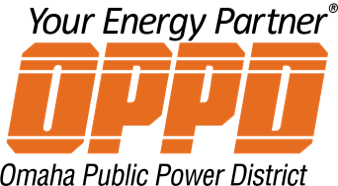
You may have frequently heard OPPD referred to as a public power utility, but you may not know what that means or why it matters to you. Our customers receive many benefits from being part of a public power utility, including lower energy costs, more involvement opportunities, and more transparency in the work that OPPD does every day. Why public power? Because it really is best for you The Cost (Savings!) of Public Power
The Cost (Savings!) of Public Power
Approximately one in seven electricity customers across the U.S. are served by public power utilities, but Nebraska is the only state where residents receive electricity service entirely from public power utilities. As a result, Nebraska residents enjoy some of the lowest rates in the country. The average public power customer in the U.S. pays approximately 12% less per kilowatt hour (kWh) than investor-owned utility customers pay. With the average American consuming about 900 kWh each month, that adds up to quite a bit of savings each month!
 Learn More!
Learn More!
Why public power?
All About the Southwest Power Pool
5 Facts about Public Power
Public Power Utilities Better Economies
Investing in Communities
Another major benefit of public power utilities is that they are an active part of the communities they serve. Utility employees and management are our friends and neighbors, and board members are elected from the local community, by members of the community. The people in charge of setting rates and developing strategic policies are experiencing the effects of those decisions alongside their fellow customers. Public power utilities also invest roughly 27% more of their electric operating revenues back into their local communities than investor-owned utilities.
In a public power utility, members of the community have access to board meetings and have multiple opportunities to provide input on different utility decisions and projects. This provides the community the chance to be actively involved in what happens with their power utility. As a result, OPPD is more responsive to the needs and desires of its customers than an investor-owned utility would be.
OPPD is also one of many organizations involved the Public Power Mutual Aid Network. In the event of storms or other large-scale outage events, these public power utilities will send employees from their utility to help communities rebound and restore power. OPPD has benefitted from this partnership following events like the windstorms in June 2017 and July 2021. Crews from Nebraska, Iowa and other parts of the country came in to help OPPD restore power as quickly as possible. In return, OPPD has dispatched crews to locations including New York City, Louisiana and Mississippi to help with outage events and natural disaster recovery. The mutual aid in response to these large-scale outages showcases the spirit of public power utilities and their investment in local communities.
Southwest Power Pool
In 2009, OPPD joined the Southwest Power Pool (SPP), which encompasses 95 utilities from Texas to North Dakota and the western part of Montana. SPP helps facilitate collaboration among utilities along this power grid to optimize assets between utilities and to be able to provide reserve power during both planned maintenance outages and adverse events. SPP also allows utility members, like OPPD, to sell their wholesale power to other power pool participants. This wholesale electricity market has enabled the reduction of electricity costs by more than $3.5 billion since 2020. There are many benefits of OPPD being a member of SPP, including lower energy costs to customers and being able to diversify energy sources.
Check out the links under Learn More! and check out our public power page to find our public power video library and links to other resources on public power and the Southwest Power Pool.
Other Related Articles and Resources
Mutual Aid Showcases the Spirit of Public Power
Public Power: Affordable Electricity a Factor for Young Family
Public Power: Powering the Good Life
How Does That Work: Mutual aid among utilities - OPPD The Wire
How Does That Work: Public Power
Nebraska Power Association: Benefits of Public Power
American Public Power Association: Disaster Response and Mutual Aid
Southwest Power Pool
60.9 Percent of U.S. Utilities are Public Power

